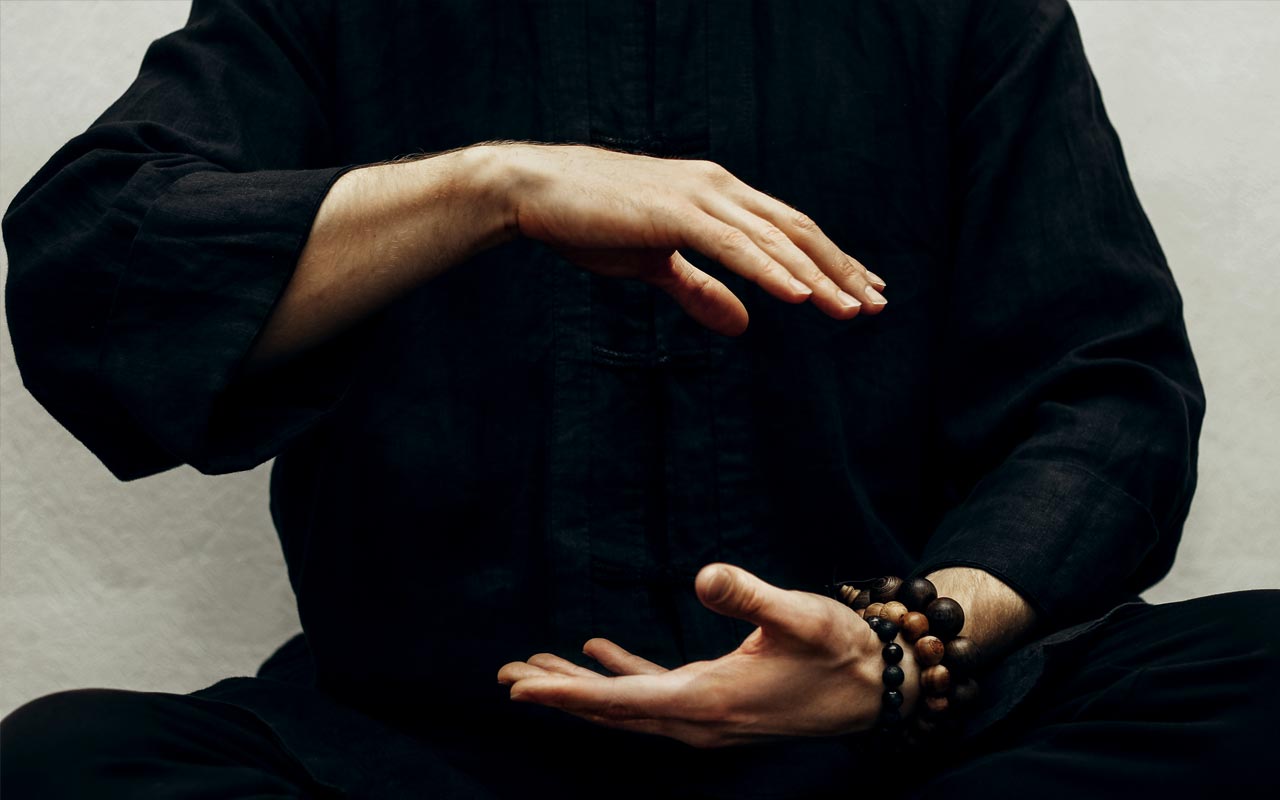What is Kiko or “Japanese Qigong”?
Originating from Chinese Qigong, Kiko is a holistic system that combines body posture, movement, breathing, and meditation to create harmony within oneself.
While not a direct part of Zen Buddhism, Kiko shares a common cultural heritage from the broader East Asian philosophy, offering valuable health and spirituality lessons. This article will guide you through the history, principles, and benefits of Kiko and discuss its intriguing intersection with modern science.
We’ll also delve into its relevance in Zen Buddhism, exploring the shared quest for harmony, balance, and a profound understanding of life.
The History of Kiko
To fully understand Kiko, it’s important to trace back its roots and understand its evolution over time. As with many East Asian traditions, the practice of Kiko has a rich and intricate history that intertwines with the broader tapestry of Asian philosophy and medicine.
Kiko originated from Qigong (pronounced “chi gong”), a Chinese practice that has been around for over 4,000 years. Qigong is known for its focus on cultivating, circulating, and harmonizing Qi or life energy (ki in Japanese). Over the centuries, Qigong has evolved, with different schools and masters adding their unique touch to the practice.
Kiko was adapted and modified by the Japanese, who incorporated their cultural nuances, creating a practice that is uniquely their own. The Japanese term ‘kiko’ literally means ‘energy work’, and it embodies the focus of the practice on channeling and harmonizing the flow of life energy throughout the body. Despite these modifications, the core principle of Kiko, revolving around the harmonization of ki, has remained steadfast.
Understanding Kiko
Kiko is a form of Qigong, a holistic system of coordinated body posture and movement, breathing, and meditation for health, spirituality, and martial arts training. Although it is not directly part of Zen Buddhism, Kiko is getting increasingly popular in Japan, and it’s even starting to be practiced in some Zen monasteries.
Kiko, rooted in Traditional Chinese Medicine (TCM), is based on understanding the body’s vital energy, or ki, and its circulation through a network of meridians. Meridians are channels that form a complex energetic pathway system in the body, connecting various organs, tissues, and energy centers.
In TCM, optimal health and well-being are believed to be achieved when the flow of qi through the meridians is smooth and balanced. Kiko practitioners seek to enhance and harmonize the circulation of qi in these meridians to support physical, mental, and emotional health.
The meridians are associated with specific organs and are classified into Yin and Yang meridians. Yin meridians are related to organs such as the liver, heart, spleen, lungs, and kidneys. In contrast, Yang meridians are associated with the gallbladder, small intestine, stomach, large intestine, bladder, and triple energizer.
In Kiko practice, various techniques influence the flow of ki within the meridians. These techniques include gentle movements, postures, breath control, visualization, and focused intention. By stimulating specific points along the meridians, known as acupoints, practitioners aim to regulate and balance the flow of ki.
Furthermore, Kiko practitioners learn to develop heightened sensitivity and awareness of the energy within their bodies. This allows them to perceive areas of stagnant or blocked qi and work to restore the flow through targeted exercises and movements.
Through regular practice of Kiko, individuals aim to improve the circulation of qi, remove blockages, and restore balance to the meridian system. This is believed to enhance overall health, boost the body’s natural healing abilities, and promote well-being.
Benefits of Kiko
Like many practices focusing on mindfulness and body energy flow, Kiko offers many potential benefits. These advantages span physical, mental, and spiritual dimensions, contributing to a more balanced, healthy, and fulfilling life experience.
Physical Benefits:
- Increased Energy Levels: By focusing on the circulation of Ki, Kiko practitioners often report feeling energized and revitalized after sessions.
- Improved Physical Health: Regular practice can enhance the immune system, improve cardiovascular health, and promote overall body wellness.
- Increased Flexibility and Balance: The physical exercises involved in Kiko improve flexibility, balance, and coordination, contributing to better overall physical fitness and reduced risk of injury.
Mental Benefits:
- Reduced Stress and Anxiety: The mindful aspect of Kiko promotes calmness and helps reduce stress and anxiety.
- Improved Focus and Clarity: By bringing attention to the body and its energy flow, Kiko can help improve concentration and mental clarity.
- Improved Sleep: Regular practice of Kiko can help balance the body’s energy, leading to better sleep patterns and quality.
Spiritual Benefits:
- Heightened Awareness: Kiko aids in building a deeper connection and awareness of one’s inner self, leading to a heightened sense of being and purpose.
- Spiritual Growth: The meditation aspect of Kiko offers a path toward spiritual growth and understanding, even outside the confines of specific religious philosophies.
- Increased Mindfulness: Kiko, much like Zen, encourages a deep sense of mindfulness, bringing a peaceful awareness to everyday life.
In essence, Kiko is more than just a practice—it’s a way towards holistic wellness and balanced living. As we explore and understand Kiko, we appreciate its beautiful body, mind, and spirit confluence.
Kiko and Modern Science
With the advent of modern science and medical research, traditional practices like Kiko and Qigong are being studied to understand their impact on human health and well-being. While the concept of ‘ki’ or ‘qi’ is not directly recognized in Western medicine, many practices and outcomes associated with Kiko correlate in scientific studies.
Research in psychoneuroimmunology (the study of the effect of the mind on health and resistance to disease) shows a direct link between the mind, nervous system, and immune system. Practices like Kiko, which involve a combination of physical movement, breathwork, and mental focus, have been shown to reduce stress, a known factor in numerous physical ailments.
Modern neuroscience also validates the benefits of mindfulness and meditation, key elements in Kiko practice. Studies suggest regular meditation can change brain structure and function, particularly in attention, self-awareness, and emotional regulation. These changes can improve mental health, cognitive function, and overall well-being.
In essence, while the language and conceptual framework of Kiko differ from those used in modern science, many of the observed benefits align with a scientific understanding of mind-body interactions. It’s a testament to the depth of wisdom inherent in such traditional practices, wisdom that modern science is just beginning to comprehend fully.
Exploring Kiko in Zen Buddhism
In addition to its growing adoption among health-conscious individuals, Kiko is increasingly garnering attention from traditionally unlikely quarters. Of note, Zen monasteries and monks in Japan are beginning to embrace Kiko in their daily practices. These advocates are drawn to the practice’s ability to synergize physical discipline with mental stillness. This alignment resonates deeply with Zen philosophy. The once obscure practice is now steadily infiltrating these sacred halls, signifying a significant shift in how Kiko is perceived and utilized. The rising interest among Zen monks, coupled with the growing mainstream popularity, underscores the versatility and relevance of Kiko in contemporary Japan.
Different Kiko Methods
The practice of Kiko encompasses a wide variety of methods and techniques that have evolved over time. Among the notable methods are the Sato Method and the Yayama Method.
The Sato Method (YouTube link), developed by Sato Kaiseki, emphasizes the cultivation and circulation of ki energy through gentle movements, breathing exercises, and meditative practices, emphasizing mindfulness and awareness of the body’s subtle energy flow.
The Yayama Method (YouTube link), attributed to Yayama Toshihiko, focuses on integrating physical and mental aspects through specific exercises and breathing techniques, aiming to enhance the flow of ki energy, promote relaxation, and stimulate the body’s natural healing processes.
While the Sato and Yayama Methods are recognized and respected within the Kiko tradition, it’s important to note that numerous other techniques are available. Practitioners are encouraged to explore and create approaches that resonate with their unique needs and sensibilities.
Great DVDs on the subject
Conclusion
This article intends to enrich our understanding, encourage dialogue, and foster mutual respect among different spiritual paths. Exploring Kiko, or any other practice, should not be viewed as a deviation from our Zen journey but rather as an enhancement of our spiritual repertoire.
I hope you enjoy this exploration of Kiko. As always, we remind our readers that the true Zen practice is about experiencing the teachings firsthand. I encourage you to continue your meditation and mindful living and seek wisdom in the silence of your hearts. Let’s keep learning, growing, and walking the path together.
In the spirit of Zen, we appreciate and respect all spiritual practices, including Kiko. As we venture into this different realm, let us remember our shared pursuit: spiritual growth, deeper understanding, and inner peace.
May your journey be filled with self-love, health, and tranquility.

